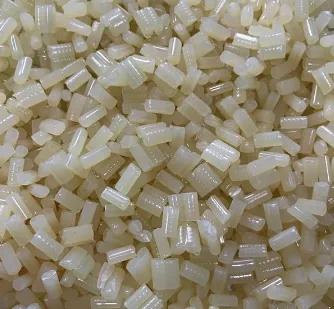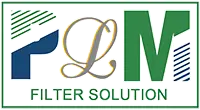юли . 18, 2025 10:44 Обратно към списъка
Innovations in Cabin Air Filter Machine Design for Sustainable Material Processing
As global awareness of air quality and environmental sustainability grows, the automotive industry is reimagining how cabin air filters are manufactured. Central to this transformation are advancements in Cabin Air Filter Production Line efficiency, Cabin Air Filter Machine engineering, and the integration of eco-friendly materials. This article explores cutting-edge innovations in machinery design that prioritize sustainable material processing, reduce waste, and align with circular economy principles.

The shift toward electric vehicles (EVs) and stricter emissions regulations has intensified demand for filters that protect both passengers and the environment. By rethinking Cabin Air Filter Production Line dynamics and adopting bio-based materials, manufacturers can reduce their carbon footprint while maintaining competitive production costs.
Streamlining Sustainability in Cabin Air Filter Production Line Workflows
Modern Cabin Air Filter Production Line systems are being redesigned to prioritize resource efficiency and minimal environmental impact. A key focus is the integration of recycled and biodegradable materials, such as post-consumer plastics and plant-based fibers, into filter media. These materials require specialized handling to maintain structural integrity, prompting upgrades in conveyor systems, blending modules, and curing stations.
For instance, closed-loop material recovery systems now capture excess filter media during production, redirecting it back into the Cabin Air Filter Production Line. This reduces raw material consumption by up to 20% while maintaining output quality. Additionally, energy recovery technologies, such as heat exchangers in drying chambers, repurpose waste thermal energy to power adjacent stages, slashing overall carbon emissions.
Some manufacturers are experimenting with mycelium-based filter frames grown from agricultural waste. These biodegradable components, processed in dedicated Cabin Air Filter Production Line zones, decompose within months post-disposal, eliminating landfill accumulation. Such innovations require humidity-controlled environments to prevent premature degradation during assembly.
Energy-Efficient Cabin Air Filter Machine Innovations
The latest Cabin Air Filter Machine designs emphasize energy savings and reduced emissions. Electrically driven pleating and sealing units, for example, replace traditional pneumatic systems, cutting energy use by 30–40%. Variable-frequency drives (VFDs) in motor systems further optimize power consumption based on real-time production demands.
Sustainable material compatibility is another priority. Machines now incorporate corrosion-resistant coatings and modular components to process abrasive or moisture-sensitive bio-based materials. For example, Cabin Air Filter Machines equipped with humidity-controlled chambers ensure consistent bonding when using water-activated adhesives derived from natural starches. These adaptations minimize downtime and extend machinery lifespan, even with eco-friendly inputs.
*A breakthrough involves solar-assisted Cabin Air Filter Machine operations. Factories in sun-rich regions now install photovoltaic panels directly on machine housings, offsetting up to 25% of energy needs. Excess power is stored in on-site batteries, ensuring uninterrupted production during grid outages.*
Precision Engineering in Cabin Air Filter Producing Machine Operations
Precision is critical in Cabin Air Filter Producing Machine workflows to minimize material waste and ensure consistent filtration performance. Laser-guided cutting systems, paired with AI-powered vision sensors, now achieve micron-level accuracy when shaping filter media. This eliminates over-trimming and reduces raw material waste by up to 15%.
Advanced Cabin Air Filter Producing Machines also employ real-time quality monitoring. Sensors embedded in pleating heads detect irregularities in fold patterns, automatically adjusting pressure or speed to maintain uniformity. Such innovations are particularly vital when working with hybrid materials, such as recycled polyester blended with activated carbon, which require precise alignment to optimize airflow and contaminant capture.
To address static buildup in synthetic media, newer Cabin Air Filter Producing Machines integrate ionizing bars that neutralize charges during cutting. This prevents material clumping and ensures smooth transitions between production stages.
Adapting Cabin Air Filter Making Machines for Circular Economy Goals
To support circular production models, Cabin Air Filter Making Machines are being retrofitted for disassembly and material recovery. Modular designs allow quick replacement of worn components, while standardized fasteners simplify recycling at end-of-life. Machines now also integrate labeling systems that tag filters with QR codes, detailing material composition for easier sorting during recycling.
A breakthrough lies in machines that process bio-based adhesives and binders. For example, Cabin Air Filter Making Machines with low-temperature curing zones enable the use of soy-based resins, which degrade naturally without releasing toxins. This shift reduces reliance on petroleum-derived chemicals and aligns with stricter emissions regulations.
Pioneering facilities now deploy "filter-to-filter" recycling systems within Cabin Air Filter Production Lines. End-of-life filters are shredded on-site, and the reclaimed fibers are fed back into the line as raw material. Contaminants like dust and oil are removed via electrostatic separators, ensuring the recycled media meets OEM standards.
FAQS:About Sustainable Cabin Air Filter Machine Design
How do modern Cabin Air Filter Production Lines handle biodegradable materials?
They utilize humidity-controlled zones and low-temperature curing systems to process delicate bio-based media without compromising integrity. For instance, mushroom-derived chitin fibers require precise temperature ranges (50–60°C) during shaping, which advanced lines maintain via IoT-regulated heating modules.
What energy-saving features are integrated into new Cabin Air Filter Machines?
VFD-driven motors, heat recovery systems, and electric actuators replace energy-intensive components, reducing power consumption by up to 40%. Regenerative braking systems in conveyor belts also capture kinetic energy during stops, converting it into reusable electricity.
How does precision in Cabin Air Filter Producing Machines reduce waste?
AI-guided cutting and real-time adjustments ensure optimal material use, minimizing off-cuts and defective outputs. Edge computing algorithms analyze historical data to predict blade wear, scheduling maintenance before accuracy drifts occur.
Can Cabin Air Filter Making Machines process recycled plastics efficiently?
Yes, upgraded extruders and filtration systems remove contaminants from recycled polymers, ensuring consistent quality in final products. Optical sorters with near-infrared (NIR) sensors now identify and eject incompatible plastics in real time, achieving 99% purity in recycled inputs.
What role do Cabin Air Filter Production Lines play in circular economies?
They incorporate closed-loop material recovery and modular designs to enable recycling and reuse at every production stage. Blockchain-enabled tracking systems also log each filter’s material journey, empowering consumers to return used units via certified recycling partners.
By reengineering Cabin Air Filter Production Line workflows and Cabin Air Filter Machine components, manufacturers can achieve dual goals of sustainability and profitability. Innovations in Cabin Air Filter Producing Machine precision and Cabin Air Filter Making Machine adaptability demonstrate that eco-conscious design is not just feasible—it’s the future of automotive filtration. As bio-based materials and decentralized recycling networks expand, the industry is poised to achieve zero-waste production cycles within the next decade.
-
Optimizing Truck Air Filters Machine Production Line for Cost-Efficiency and Sustainability
НовиниJul.18,2025
-
Modular Eco Oil Filter Production Line Solutions for Scalable and Flexible Output
НовиниJul.18,2025
-
Innovations in Cabin Air Filter Machine Design for Sustainable Material Processing
НовиниJul.18,2025
-
Energy-Saving Innovations in Spin-On Oil Filter Machine Design for Sustainable Manufacturing
НовиниJul.18,2025
-
Circular Economy Strategies in Toyota Air Filter Production Line Management
НовиниJul.18,2025
-
Advancing Car Air Filter Making Processes with High-Efficiency PP Material Integration
НовиниJul.18,2025
